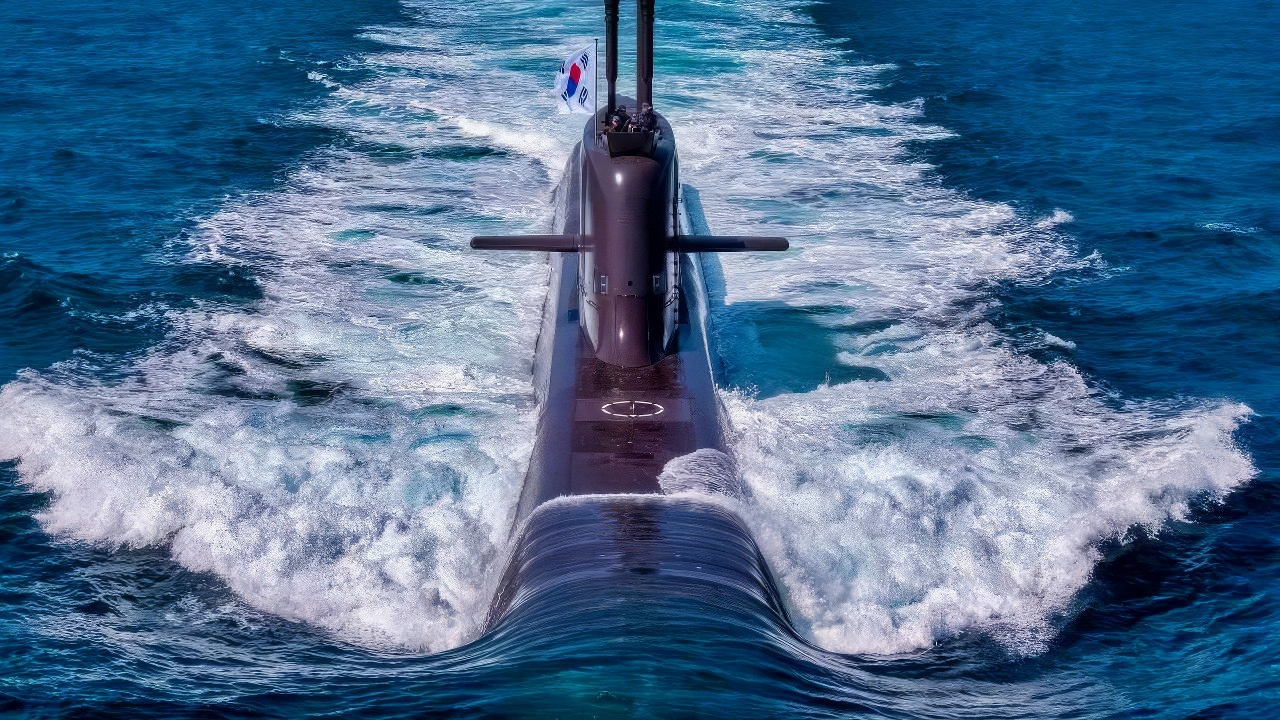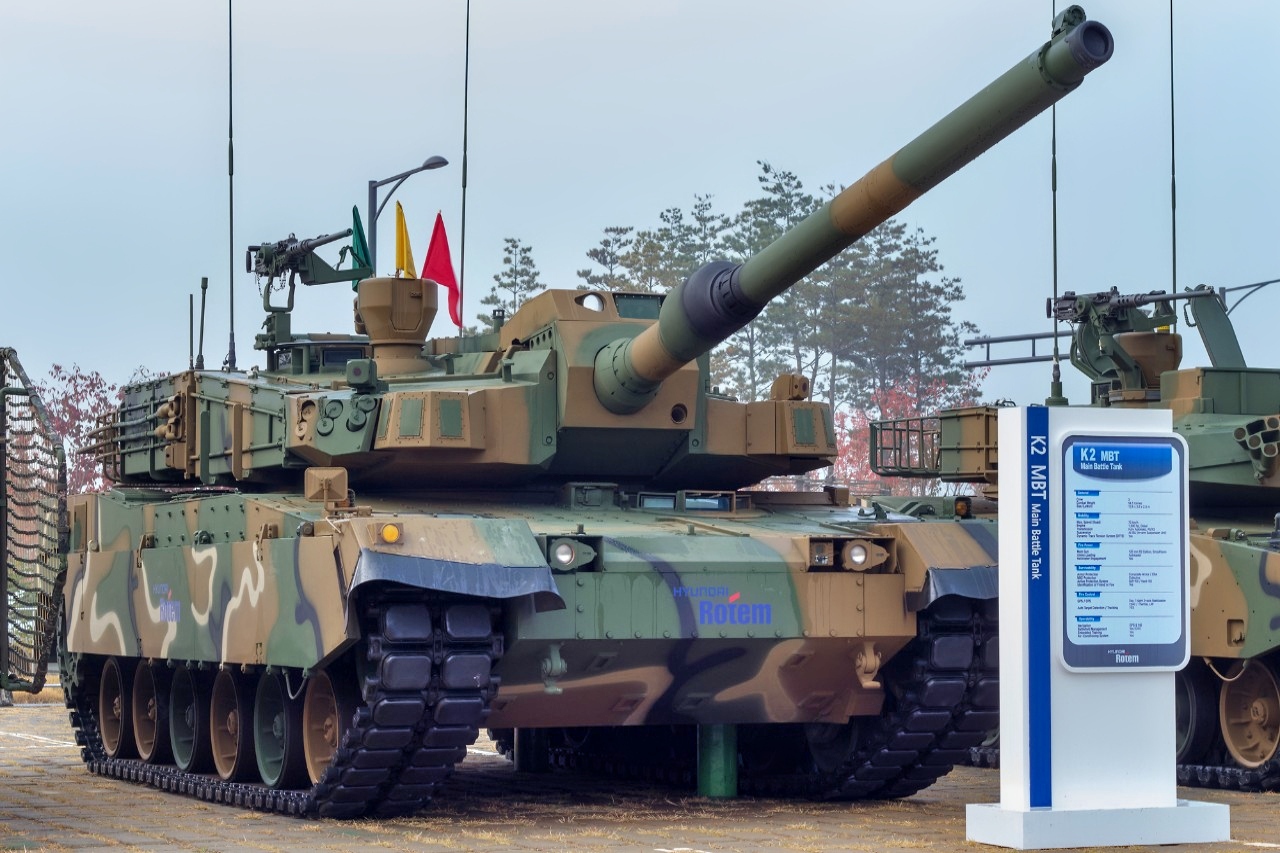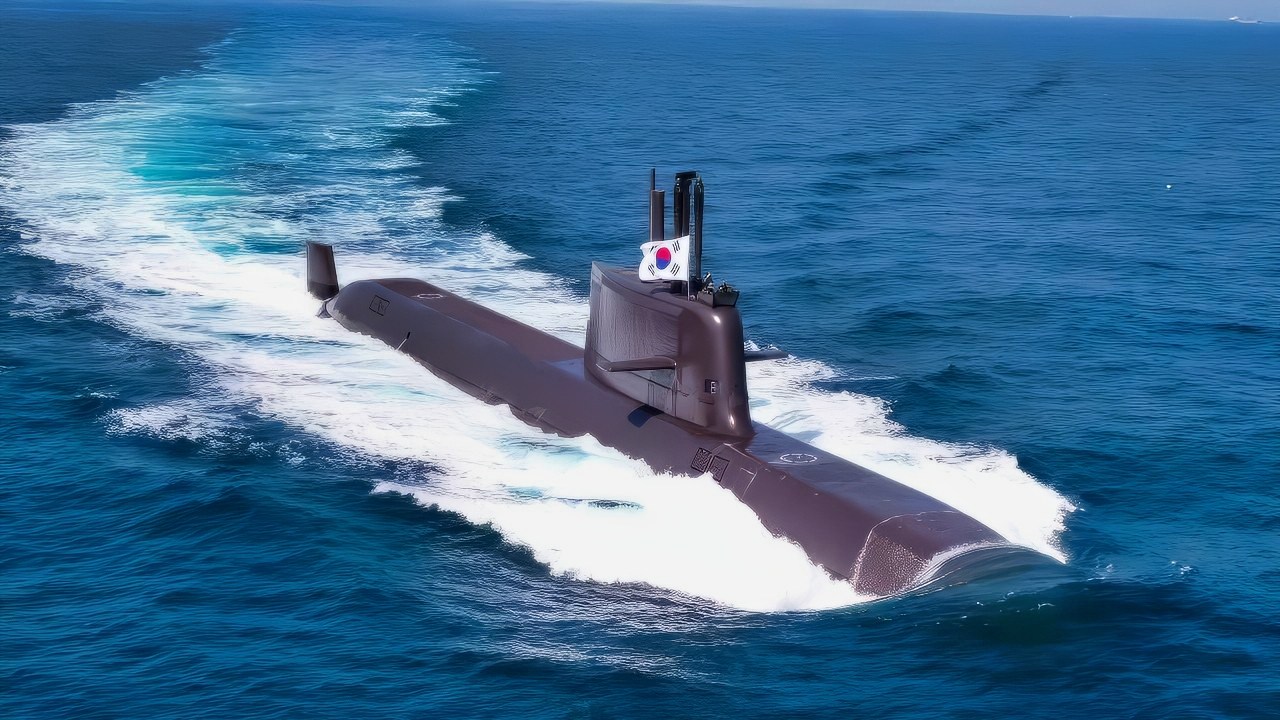Key Points and Summary – South Korea’s Hanwha has launched the first KSS-III Batch II submarine for sea trials, a vessel that significantly enhances its naval power.
-The new sub is one of the world’s most advanced, combining both lithium-ion batteries and an Air-Independent Propulsion (AIP) system for the “longest submerged endurance of any conventional submarine.”

KSS-III submarine from South Korea. Image Credit: Creative Commons.
-Crucially, it’s one of the few non-nuclear subs with a Vertical Launch System (VLS) for ballistic missiles, a key part of Seoul’s “Korea Massive Punishment and Retaliation” deterrence strategy against North Korea.
-This launch also highlights South Korea’s rise as a top-10 global arms exporter, as it is now a top contender for Canada’s upcoming 12-submarine contract.
South Korea’s KSS-III Batch II Submarine Set to Begin Sea Trials
South Korean shipbuilder Hanwha recently launched its very first KSS-III Batch II submarine at the company’s shipyard in Geoje last week ahead of the ocean trials.
The submarine, the first of its kind, is larger and more capable than previous batches of submarines in service with the Republic of Korea Navy, as well as its predecessor, the Dosan Ahn Chang-ho-class submarines.
“Powered by advanced lithium-ion batteries and equipped with a fuel cell-based Air Independent Propulsion (AIP) system, the KSS-III CPS offers the longest submerged endurance of any conventional submarine,” Hanwha explains on their website. “It is mission-optimized for Anti-Submarine Warfare (ASW), Anti-Surface Warfare (ASuW), Intelligence, Surveillance, and Reconnaissance (ISR), minelaying, and Special Operations Forces (SOF) support.”
“It features a state-of-the-art open architecture mission system,” the firm added, “enabling seamless integration of additional weapons into the combat management system and allowing for easy performance upgrades.” The submarine is slated to enter service with the Republic of Korea Navy in 2027 following the submarine’s sea trials.
Though conventionally powered, the KSS-III AIP system facilitates extended underwater patrols.
And crucially, the KSS-III is one of the world’s very few conventionally powered submarines equipped with a Vertical Launch System for firing submarine-launched ballistic missiles.
That capability is one of the most critical nodes in Seoul’s Korea Massive Punishment and Retaliation deterrence program. These are one of three legs that aim to preempt a North Korean offensive before hostilities and retaliate in the event of war on the peninsula.
South Korea’s missile range has been restricted to 500 miles by agreement with the United States since 1979. But the Biden administration lifted that restriction, opening the door for a more capable, blue-water Republic of Korea Navy — a significant force posture adjustment for a naval force that had been hyper-focused on potential regional conflict with its neighbor to the north.
The South Korean Juggernaut
If the purchase goes forward—12 submarines in total—it would be a prominent part of Ottawa’s intention to invest tens of billions of dollars into the moribund Canadian military in the coming years. But if South Korea’s Hanwha secures the Canadian submarine contract, it would mark a significant shift for a Canadian military that has historically inked defense deals primarily with the United States and NATO allies.

K2 Black Panther. Image Credit: Creative Commons.

K2 Black Panther Tank from South Korea. Image Credit: Creative Commons.
The departure from those traditional allies to meet Canada’s defense needs would mark a significant shift in Canadian policy — particularly since South Korea is not a member of NATO. The alliance sets standardization rules, facilitating ammunition interoperability and simplifying internal NATO logistics.
However, South Korean defense firms do largely adhere to NATO standardization tables given the American military’s significant presence in the country.
More broadly, South Korea is making rapid inroads in the world of defense deals. According to the Stockholm International Peace Research Institute, a think tank that tracks arms deals, South Korea is the 10th largest exporter of arms worldwide.
“When it comes to the weapons that Korea is selling to Europe, the U.S. could provide them, but it would be more costly,” explained Ramon Pacheco Pardo, of King’s College London and the KF-VUB Korea Chair at the Brussels School of Governance, speaking to POLITICO. “Korea has the industrial capacity to do so, and it manages its defense industry as if war could break out tomorrow.”
South Korea is eager to capitalize on the defense spending boom in Europe driven by Russia’s full-scale invasion of Ukraine in 2022.
Poland has been one of NATO’s most enthusiastic defense spenders, and entered into a $22 billion defense agreement with Seoul to purchase South Korean K2 main battle tanks, self-propelled howitzers, and FA-50 jet trainers.
“Korea still sees Europe as a region in which it will be able to increase sales over the next few years,” Mr. Pardo noted. “Obviously, the signature agreement is the one with Poland. But the Baltic states and many countries in Central and Eastern Europe have been buying from Korea or plan to do so and are engaged in negotiations.”
Although Europe’s Byzantine procurement rules require a high percentage of kit to be bought from firms on the continent, Seoul hopes that its ability to deliver systems en masse will give it a foot in the door of the European defense market. And as an alternative, South Korea could, in theory, contract with European defense firms to supply components for European platforms, providing another avenue for South Korean kit to find inroads in Europe.
What Happens Now?
Whether Hanwha can capitalize on the interest in South Korean weapon systems piqued by their land warfare firm counterparts remains to be seen. However, securing a contract with Ottawa would be a significant coup for the company.
Given the greater endurance afforded by the KSS-III Batch II submarines’ Air-Independent Propulsion and their robust weapon load-out, they make an attractive option, particularly given that most navies lack the infrastructure necessary to support nuclear-power submarine operations.
Perhaps the company’s offering can entice Canadian leadership in Ottawa.
About the Author: Caleb Larson
Caleb Larson is an American multiformat journalist based in Berlin, Germany. His work covers the intersection of conflict and society, focusing on American foreign policy and European security. He has reported from Germany, Russia, and the United States. Most recently, he covered the war in Ukraine, reporting extensively on the war’s shifting battle lines from Donbas and writing on the war’s civilian and humanitarian toll. Previously, he worked as a Defense Reporter for POLITICO Europe. You can follow his latest work on X.
More Military
How an F-16 Fighter Barely Dodged 6 Surface-to-Air Missiles
The Mach 2.15 F-111 Aardvark Has a Message for the U.S. Air Force
The U.S. Army’s Bradley Fighting Vehicle Has a Message for Any Military On Earth
The U.S. Navy’s Great Missile Shortage
The F-14 Tomcat U.S. Navy Fighter Has A Message for Any Military On Earth










